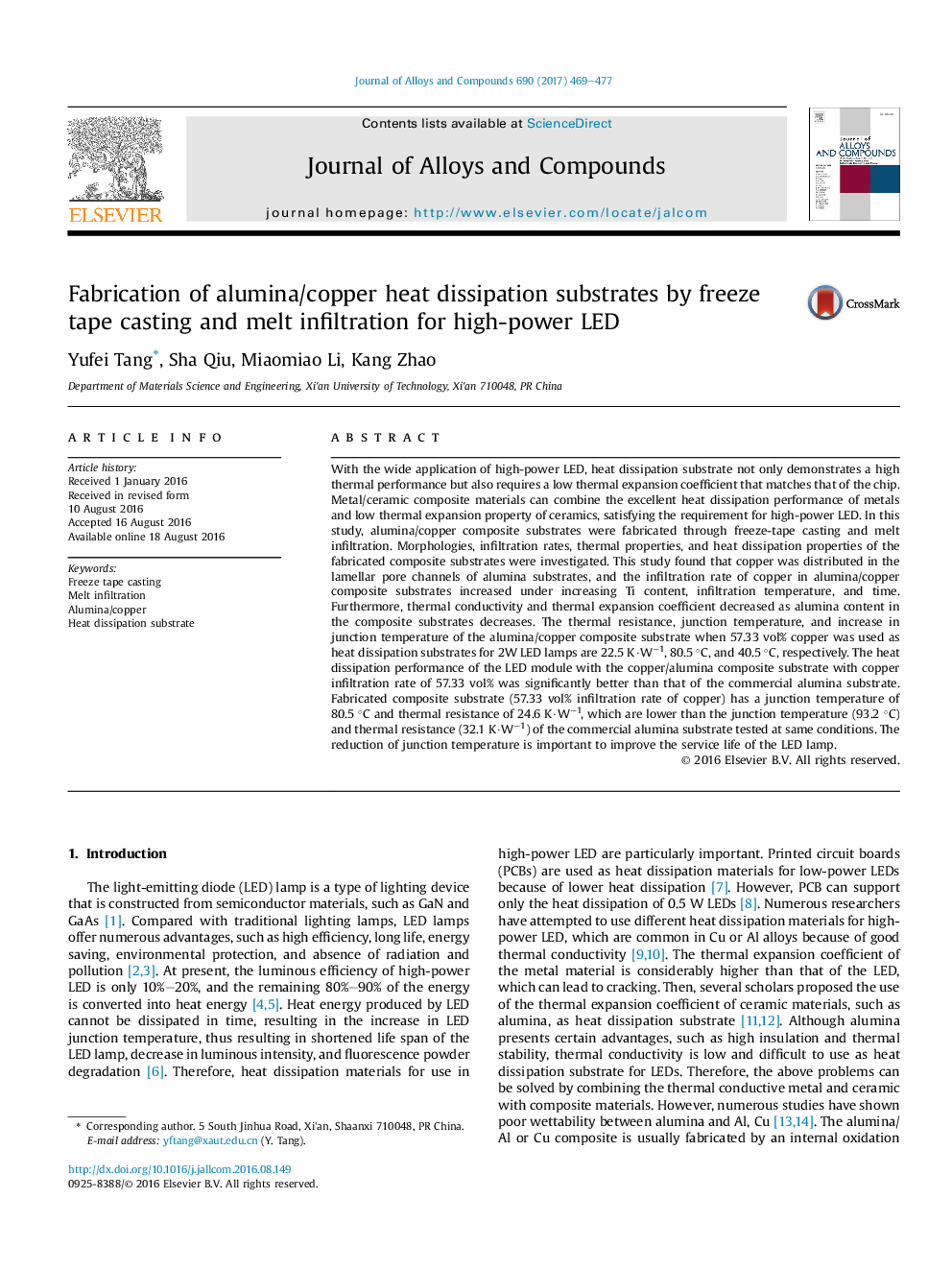| Article ID | Journal | Published Year | Pages | File Type |
|---|---|---|---|---|
| 1604946 | Journal of Alloys and Compounds | 2017 | 9 Pages |
•Novel alumina/copper heat dissipation substrates for LED were synthesized.•High thermal conductivity and low thermal expansion coefficient were obtained.•Mechanisms about heat dissipation in the fabricated samples were discussed.
With the wide application of high-power LED, heat dissipation substrate not only demonstrates a high thermal performance but also requires a low thermal expansion coefficient that matches that of the chip. Metal/ceramic composite materials can combine the excellent heat dissipation performance of metals and low thermal expansion property of ceramics, satisfying the requirement for high-power LED. In this study, alumina/copper composite substrates were fabricated through freeze-tape casting and melt infiltration. Morphologies, infiltration rates, thermal properties, and heat dissipation properties of the fabricated composite substrates were investigated. This study found that copper was distributed in the lamellar pore channels of alumina substrates, and the infiltration rate of copper in alumina/copper composite substrates increased under increasing Ti content, infiltration temperature, and time. Furthermore, thermal conductivity and thermal expansion coefficient decreased as alumina content in the composite substrates decreases. The thermal resistance, junction temperature, and increase in junction temperature of the alumina/copper composite substrate when 57.33 vol% copper was used as heat dissipation substrates for 2W LED lamps are 22.5 K·W−1, 80.5 °C, and 40.5 °C, respectively. The heat dissipation performance of the LED module with the copper/alumina composite substrate with copper infiltration rate of 57.33 vol% was significantly better than that of the commercial alumina substrate. Fabricated composite substrate (57.33 vol% infiltration rate of copper) has a junction temperature of 80.5 °C and thermal resistance of 24.6 K·W−1, which are lower than the junction temperature (93.2 °C) and thermal resistance (32.1 K·W−1) of the commercial alumina substrate tested at same conditions. The reduction of junction temperature is important to improve the service life of the LED lamp.
